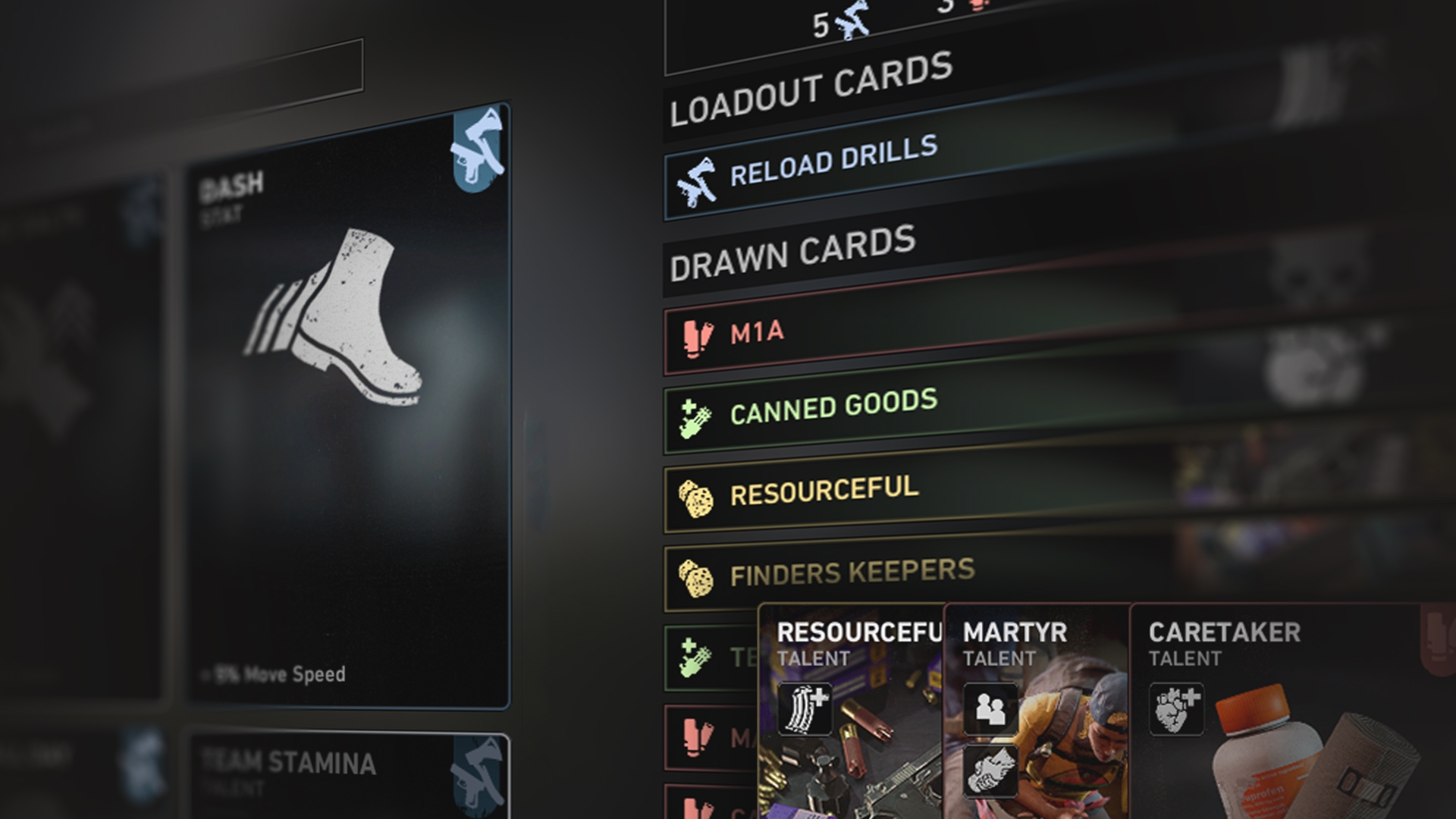Back 4 Blood went into a limited-time closed alpha on December 17, 2020, and is planned to continue until December 21. Players are invited to see roughly what to expect when the game from Turtle Rock Studios launches next year. You can see exactly what we thought of the closed alpha by reading our first impressions, but if you’re curious about the in-game cards, then keep reading.
To nutshell it, cards in Back 4 Blood essentially give players an advantage of some kind. Some offer nothing but a positive buff, while others may give a substantial buff at the cost of a debuff elsewhere. For example, having a 10% increase in movement speed will disable the ability to sprint, 30% extra health will come with -10% stamina, and so on.
These cards are assigned to “Decks”, of which you can have a total of 15 cards per deck. You can assign 1 loadout card which will be instantly available at the start of each campaign. The other cards are “Drawn Cards” and I’ll get into explaining those shortly. Before we continue, let me just clarify that each campaign is broken up into stages.

Cards are categorized into 4 categories, each offering different benefits in their focus area. Reflex cards mostly focus on stamina and speed while Discipline cards go into ammo, and damage received or given. Brawn is about health and melee, and Fortune is about loot and how ammo is used. Or at least something along those lines anyway.
Each category has certain cards that grant specific starting weapons for example or add an extra inventory slot. Some cards apply to just your character, others apply to the entire team. It’s worth noting that the cards you choose are not all going to be used, in fact, you’ll probably only use at least 6 or 8 cards in total so it’s worth choosing which ones you think will be beneficial should you have to use them. Here’s why.
When you start a Back 4 Blood campaign and you’ve chosen your character, you can select one of your saved decks. The loadout card becomes active instantly, so if you assign a card that grants you an AK47 starting weapon as your loadout, you’ll start with an AK47 rather than your character’s default weapon. You are then dealt with random cards from your drawn cards list, of which you can select 1 card from 3 different draws.
Basically, you’ll start the campaign with 1 loadout card and 3 other cards.

Each time you get to a safehouse and start the next stage, you’ll be allowed to choose 1 additional card before you leave. That’s not all though, as when you wander across the levels you have a chance at stumbling across a random basic card, picking this up will throw a totally random card into your active cards inventory. To keep track of what cards are active you can open a screen and see what cards do what.
It’s not all positive as Back 4 Blood will have the Game Director choose its own Corruption cards at the start of the match and also at the start of each stage. These cards can have more ridden enemies added, or special enemies such as a Recth or Hockers, etc. These cards are said to offer the player replayability as the way levels play out can change based on the corruption cards.

It’s an interesting system that also finds you having to tactically decide on what cards to bring into play. When offered, do you take up the opportunity to have unlimited secondary ammo, or do you grant the entire team a small health buff? Do you start with an extra slot for explosives, or do you start with an M1 Garand? As the game draws closer to launch I imagine there may be a bunch more cards to choose from, but the selection currently is already fantastic.
Back 4 Blood is to be launching June 22, 2021, for PS4, PS5, Xbox One, Xbox Series X, and PC. You can read our first impressions based on the closed alpha right here.
The post Back 4 Blood Closed Alpha Guide — Here’s How Those Cards Work by Ben Bayliss appeared first on DualShockers.
